
Pura Vida in Costa Rica
Joe Minihane heads to Central America’s eco-tourism capital, Costa Rica, in search of a life less ordinary.
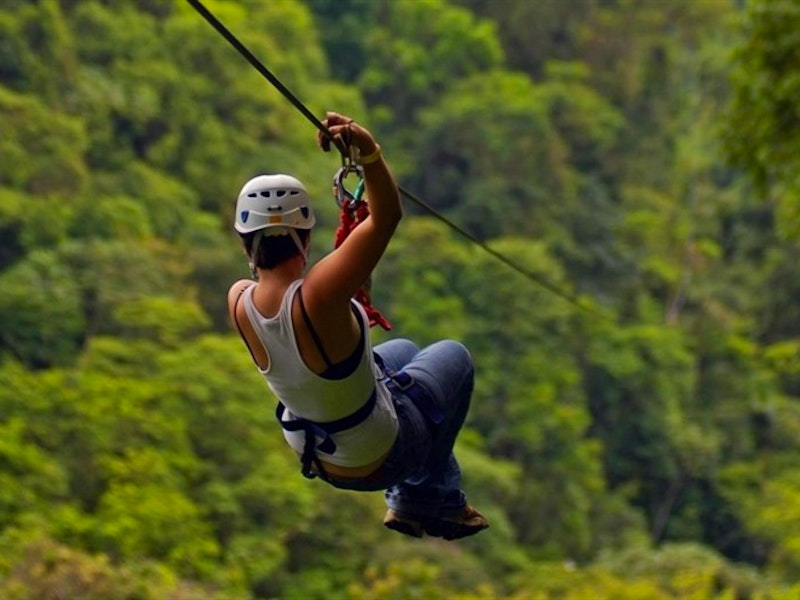

My harness hangs heavy from my waist, my helmet strapped tight beneath my chin. I can hear plenty of chatter, but can’t make out any voices. All I can see is the zip line stretching out over low branches before the canopy falls away to nothing. The child–like cone of Arenal volcano looms on the horizon, smouldering.
I feel a nudge on my shoulder and snap out of my reverie.
“You’re up.”
I step towards the open ledge, where a grinning Costa Rican guide clips my harness to the wire, along with a set of hefty handlebars.
“Now straighten your arms, lean back and cross your legs. Pura Vida!”
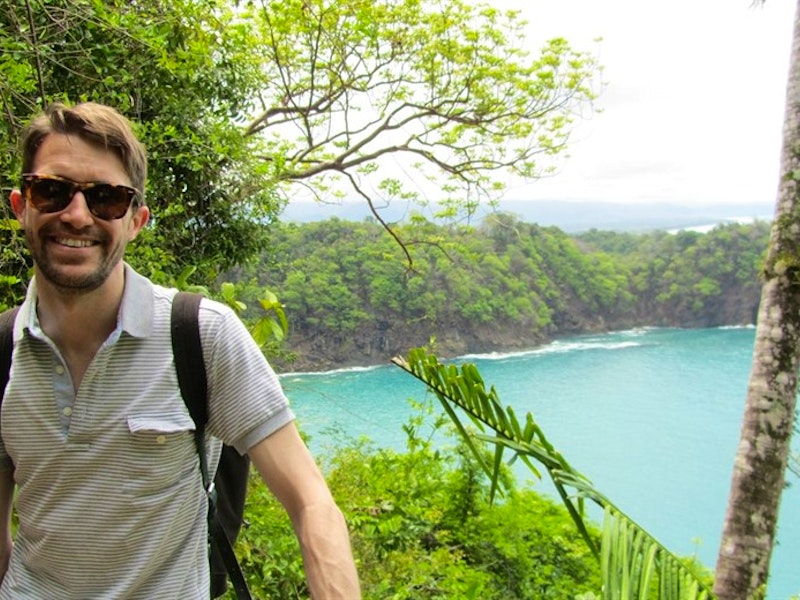

With the gentlest of pushes, I begin hurtling over the lush forest, shouts of encouragement behind me from my fellow zip–liners fading to nothing. The wind smacks my face and I let out an almighty ‘Whoop!’ A pair of turkey vultures circle on the thermals below me, their finger–like wings a striking black against the riot of green 660 feet below.
Within seconds, I’m rattling on the line to slow down and being helped onto the landing platform.
'Pura Vida, huh?” says the next guide, unclipping me and helping me back to my feet.
'Pura Vida!” I reply, adrenaline zipping through my veins faster than the 40mph joy ride I’ve just enjoyed.
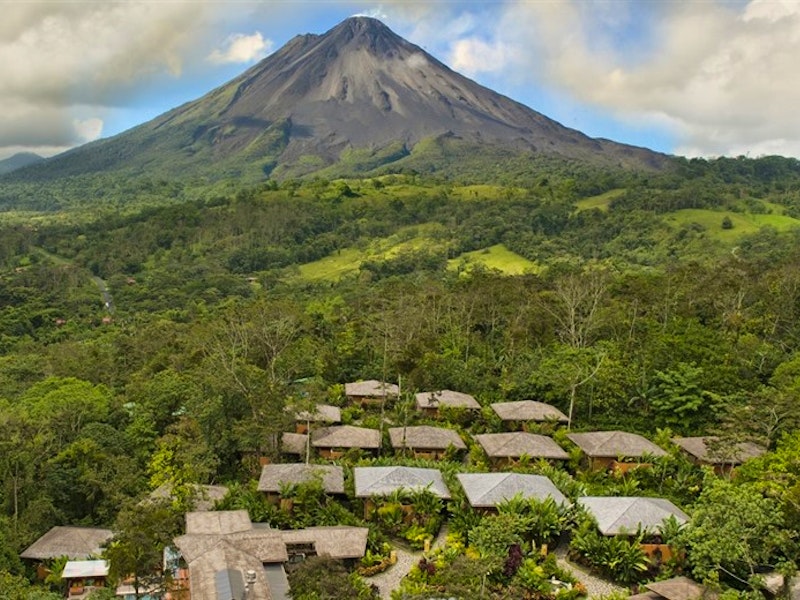

Pura Vida is inescapable in Costa Rica. Its literal English translation is ‘Pure Life’, but it’s more than that. For the population of this small, diverse and spectacular little country in Central America, it’s a way of life. It’s an expression of optimism, a greeting and a farewell. And most of all, it’s an exhortation to live life in the moment, to be present.
On the zip lines around Arenal, that’s not a challenge. Experiencing the majestic surroundings while your heart races is Pura Vida in its purest form. There’s simply nowhere else you can be.
But that’s not to say there aren’t more sedate ways to get your fix. Back on the ground, Arenal’s surrounding mountains, forests and spa hotels offer plenty of ways to discover why this country has become a mecca for tourists beyond adrenaline–laden activities. After all, there’s a reason British Airways has just started flying direct to the capital San José from London Gatwick.
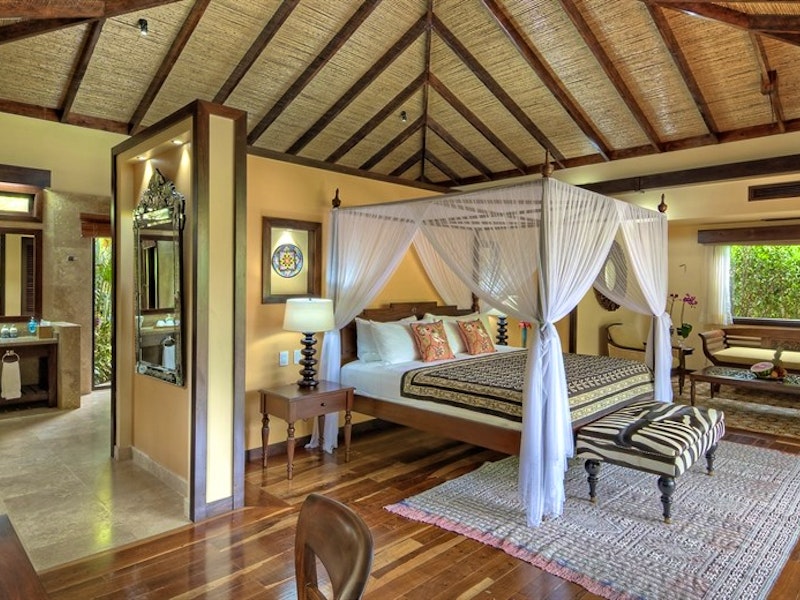

Although Arenal hasn’t been active since 2010, the molten lava beneath the surface here feeds hot springs, meaning the area is blessed with numerous resorts where piping hot pools and tumbling water abound. And after winding my way down the six increasingly vertiginous zip lines, hanging on for dear life, my body is in need of a breather.
Fortunately, my villa at Nayara Springs, a short drive from the Sky Tram zip lines where I’ve spent the morning, comes with its own spring–fed hot tub. As I slide in and power up the jets, working out the kinks in my back and legs, I look up at Arenal and enjoy taking in the views of its foreboding peak from a more sedate position.
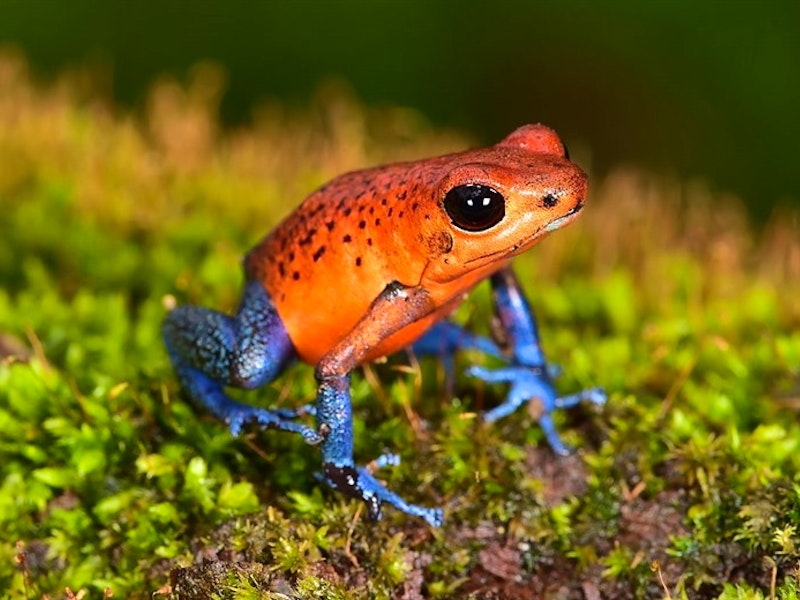

It could be easy, not to mention overwhelmingly tempting, to spend every waking hour kicking back in my tub and enjoying Nayara’s poolside luxuries and sensational Asian–inspired restaurant. However, there’s plenty of Pura Vida close by to ensure I’m showered and ready to go after a couple of hours well–earned rest.
I’m met by my guide Paulo and his friend, Jason, and we head off into the foothills and the home of Otto Mendez. Otto is a botanist and plant fanatic and has created a network of paths through the forest that surrounds his property, with the express aim of nurturing Costa Rica’s best wildlife. Although it only covers 0.03% of the Earth’s surface, Costa Rica is home to 6% of its biodiversity, making it one of the best places in the world to see exotic birds, mammals, amphibians and insects in their natural environment.
Paulo and Jason are both wildlife obsessives and, as night falls, lead me into the trees. Immediately, our torches pick out some stunning finds. Blue jeans frogs, their tiny blue and orange bodies impossible to miss, perch on garish green leaves. Poisonous tree frogs cling to branches. Cane toads croak at the edge of a pond. Well-camouflaged stick insects dot the trail edges.
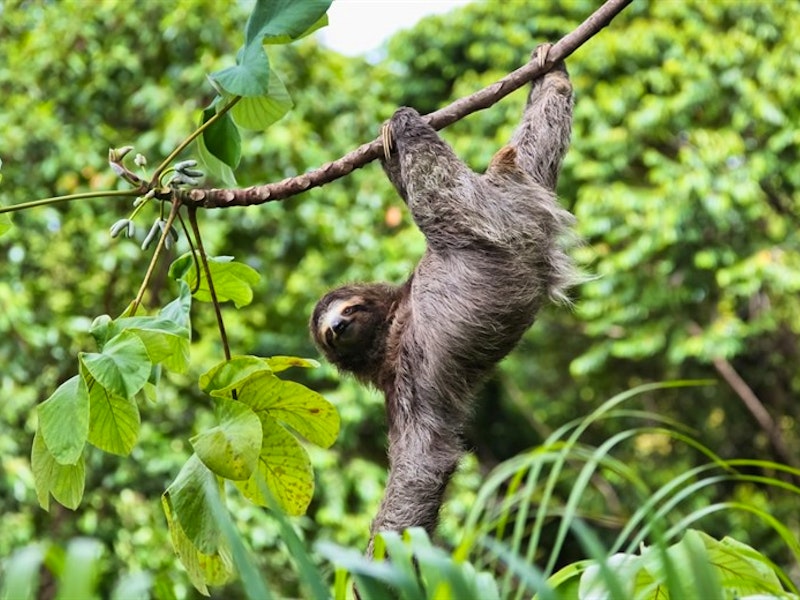

Costa Rica has 27 national parks and protected areas for wildlife. Nature is serious business here. Over dinner of rice, beans and salsa on Otto’s verandah, Paulo explains why conservation is so important here. The country produces most of its energy from hydro–electric plants and has slashed the amount of fossil fuels it burns. Palm oil production and farming are heavily regulated. Costa Rica cherishes the environment unlike anywhere else I’ve been. As tourism booms, protecting wildlife for all to see has become essential too.
The thing is, spotting smaller animals makes you want to see bigger ones. After we leave Otto’s, I badger Paulo for tales of jaguars, sloths, monkeys and crocodiles. Paulo, a veteran guide, has only seen jaguars a couple of times. While he can’t promise me a sighting of the big cat, he tantalises me with what other fauna I can expect to see in Manuel Antonio National Park, on the Pacific Coast.
I’m not disappointed. On the long drive south, we cross the Tarcoles River. Paulo pulls up and we peer over the edge of Puente de Cocodrilos. The clue’s in the name. I count 22 hulking reptiles sunning themselves in the shallows. One is at least three metres long, patrolling the group and looking for all the world as if he belongs to a prehistoric era.
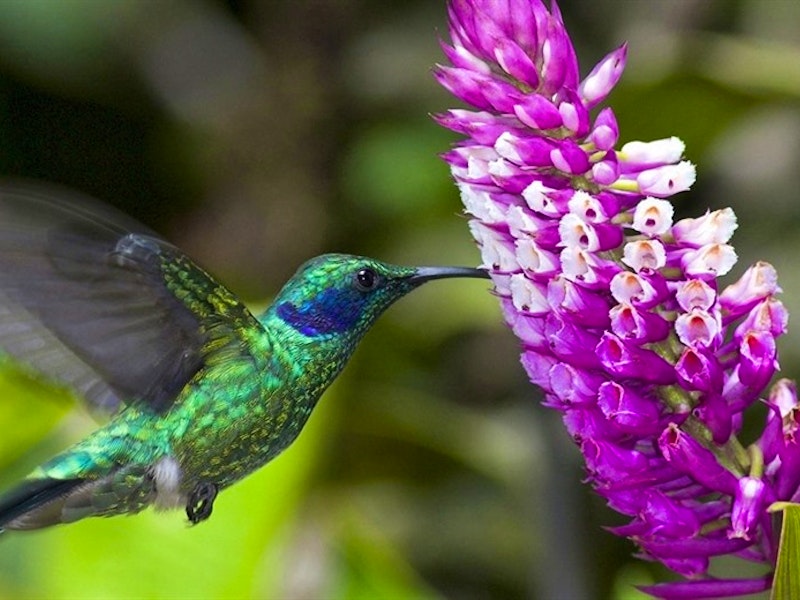

Once we reach Manuel Antonio, however, things crank up a notch. This is wildlife, Pura Vida–style. Costa Rica’s most famous national park might be small, at just 20km square, but it is home to some of its best–loved animals. On a short trail off of the main path, Paulo picks out a sloth inching its way through the canopy. The relaxed mammal takes a peep down at the tourists staring up at it, seems to shrug and then sets back on its merry way.
Just a few metres more, and the trail becomes sandy, slipping down onto a perfect beach, where the rainforest falls into the Pacific. Waves boom on distant rocks. Paulo and I strip off and head for the water as capuchin monkeys play among sunbathing tourists. The water is warm, the view back to shore idyllic. There are many ways to enjoy Pura Vida, but I think I’ve found my favourite.

Joe travelled to Costa Rica with Rainbow Tours. A 7- night holiday visiting San Jose, the Central Valley, Arenal and Manuel Antonio costs from £1,985 per person including flights with British Airways. rainbowtours.co.uk 020 7666 1304
Click here to find your perfect Costa Rica holiday.



